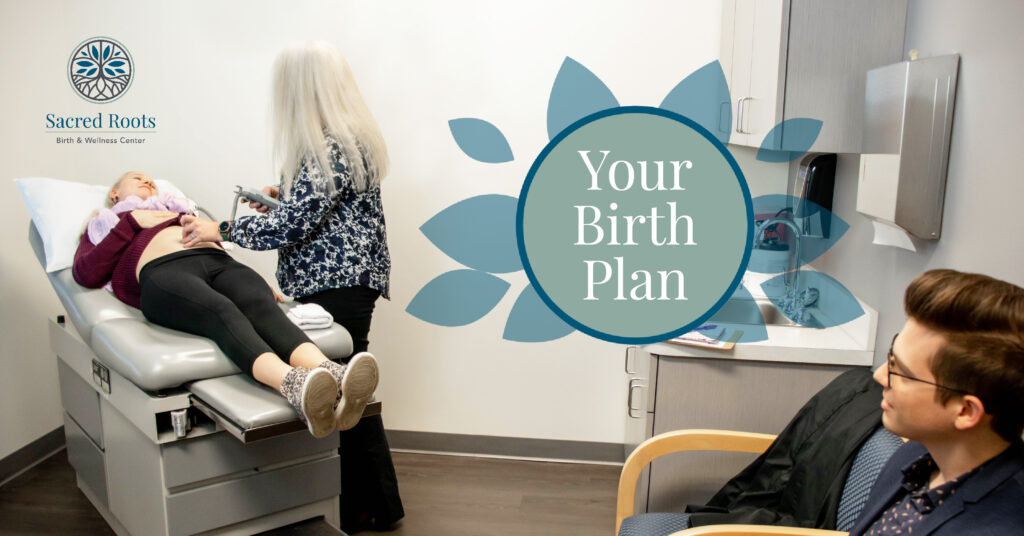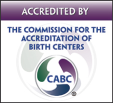Your Birth Plan
A birth plan or birth vision is a written document that lays out your wishes for labor, birth, and postpartum care. There are many templates you can find online, or you may create your own. Most versions of a birth plan no matter your planned birth setting will include much of the same parts, including:
Labor:
- Who will be in the room with you during labor? What are their relationships to you, and what will their roles be?
- Will your older children be present at the birth?
- Do you have a doula or birth photographer?
- What are your plans for pain management?
- What options for pain management are you ok with being discussed, or not being discussed?
- Are you open to using nitrous oxide during labor?
- Do you have any requests about the labor environment- lights, noise, phrases or words to be used or not used?
- Do you want to shower, bathe, or have a waterbirth?
- If you have tested positive for GBS, do you plan on accepting antibiotics in labor?
- What kind of monitoring do you anticipate having during labor?
- Are you open to accepting an IV, if needed?
- Are students allowed in the room while you labor or birth?
- Are you open to suggestions about positioning or coping techniques?
- Do you want to know what your cervical exam is, if you have one?
- Do you want to minimize cervical exams as much as possible?
Birth:
- Do you want to hold your baby immediately after birth?
- When do you want the umbilical cord to be clamped and cut?
- Do you want to catch your baby, or do you want your partner to catch your baby?
- Who will announce the sex of your baby, if it is not known?
- Do you plan on accepting pitocin after your baby has been born to prevent bleeding, or only if you have excessive bleeding?
- Do you have any plans for your placenta- encapsulation, photography, prints?
- Are you planning on taking your placenta home?
- Are you planning to breast/chest feed? Are you open to assistance from your birth team?
- Do you want assistance initiating breastfeeding, or do you want your baby to bring themselves to your breast/chest?
Postpartum:
- How are you planning to feed your baby? Breast/chest feeding, pumping, formula, or a combination of these?
- How long do you want assessments and procedures delayed, so that you may have enough time bonding with your baby?
- What medications or vaccines do you want your baby to receive?
- When do you want your baby to be bathed?
- If you are having a boy, do you plan on circumcising?
- Who is your baby’s pediatric provider?
Along with your “Plan A,” you may consider making a backup birth plan in the event that there are any complications or deviations from your original vision. If you are having a birth center or home birth, you may want to write a birth plan in the event that you transfer to a hospital. This can be created in one birth plan, or in two separate ones. This can include your wishes in the event of a non-urgent situation, such as a transfer to the hospital for an epidural, or an urgent situation, such as if your baby shows signs of distress during labor.
Oftentimes, in preparation for labor and birth, there can be a fear of complications or deviations from the birth plan, or a fear that things may “go wrong.” It may feel counterintuitive to discuss those “what ifs,” to give voice to them. It may feel like you are saying that you don’t believe in your Birth Plan A- this couldn’t be further from the truth! In all labor and birth, we do not always have control over how- and when- things will unfold. That is the nature of birth. If you are feeling anxious about giving birth, this can be an exercise in working through some of those feelings. Research your options and write your Plan A and B. Have faith in Plan A- the “what if everything goes right?” plan. And know that you have a Plan B if it is needed, that your wishes have been written out for anyone who might care for you and your family.
Another benefit to creating your birth vision is exploring options available to you. In your process of creating a birth vision, you may discover things that you had not yet considered including. You may start to think about what things you do, or do not, desire in your birthing space.
Copies of your birth vision can be stashed in your go-bag to bring with you to give to whoever is attending your birth. Ideally, you will also have time during prenatal appointments or doula visits to go over your birth vision.
Wherever and however you birth, a birth vision can be beneficial. It can open up discussion between you and your partner. It gives you knowledge of options you may not have known you had. It allows your birth team to know your wishes. It allows you to plan for the best, and rest easy knowing that your wishes have been made known in the event that the unexpected occurs.
At Sacred Roots, we routinely practice delayed cord clamping, immediate skin to skin contact between mother and baby, and delaying newborn assessments until after you and your baby have had at least 1.5-2 hours of skin to skin time. At your 36 week visit with us, you will have the opportunity to discuss your birth vision in depth with your nurse and midwife. Feel free to bring your birth vision with you!



